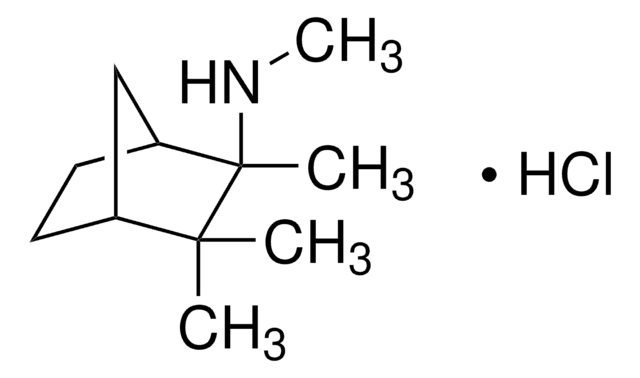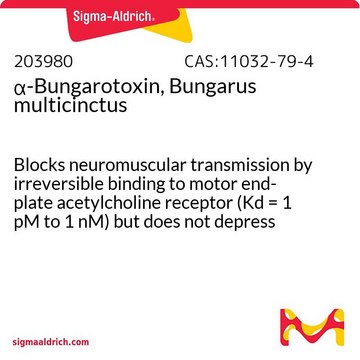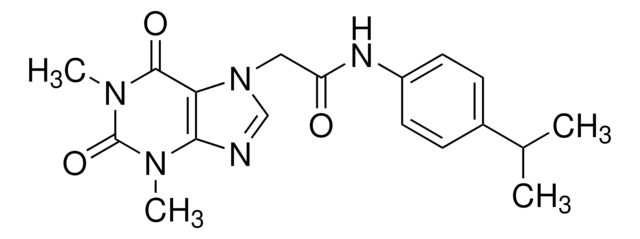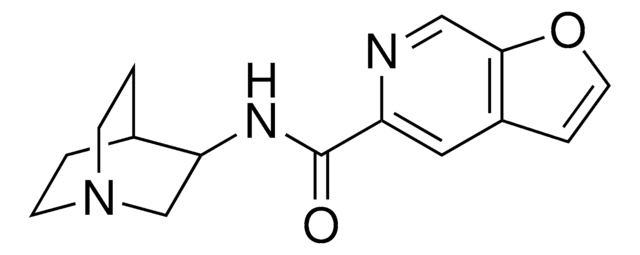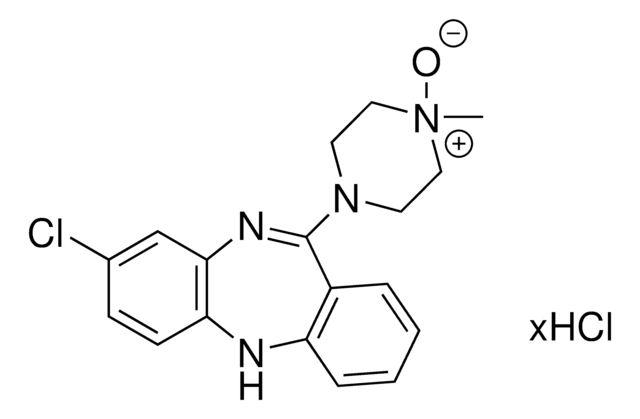Key Documents
M168
Methyllycaconitine citrate salt
from Delphinium brownii seeds, ≥96% (HPLC)
Synonim(y):
MLA, [1α,4(S),6β,14α,16β]-20-Ethyl-1,6,14,16-tetramethoxy-4-[[[2-(3-methyl-2,5-dioxo-1-pyrrolidinyl)benzoyl]oxy]methyl]aconitane-7,8-diol citrate salt
About This Item
Polecane produkty
pochodzenie biologiczne
Delphinium brownii seeds
Próba
≥96% (HPLC)
kolor
white
rozpuszczalność
H2O: 42 mg/mL
temp. przechowywania
−20°C
ciąg SMILES
O=C(OC[C@]12[C@@]([C@]3([C@H](CC1)OC)[C@@H]4N(C2)CC)([H])[C@@H]([C@]4(O)[C@]5(O)[C@]6([H])[C@@]3([H])C[C@@]([C@H](C5)OC)([H])[C@@H]6OC)OC)C7=CC=CC=C7N8C([C@@H](C)CC8=O)=O.OC(CC(CC(O)=O)(C(O)=O)O)=O
InChI
1S/C37H50N2O10.C6H8O7/c1-7-38-17-34(18-49-32(42)20-10-8-9-11-23(20)39-26(40)14-19(2)31(39)41)13-12-25(46-4)36-22-15-21-24(45-3)16-35(43,27(22)28(21)47-5)37(44,33(36)38)30(48-6)29(34)36;7-3(8)1-6(13,5(11)12)2-4(9)10/h8-11,19,21-22,24-25,27-30,33,43-44H,7,12-18H2,1-6H3;13H,1-2H2,(H,7,8)(H,9,10)(H,11,12)/t19-,21+,22+,24-,25-,27+,28-,29+,30-,33?,34-,35+,36-,37+;/m0./s1
Klucz InChI
INBLZNJHDLEWPS-DDIMIZGISA-N
Zastosowanie
- to study its effects on inflammatory response in rats post nicotine treatment
- to block the activity of galantamine
- to study its effects on the hepatic branch of the vagus nerve (hVNS) in rats
Działania biochem./fizjol.
Cechy i korzyści
Kod klasy składowania
11 - Combustible Solids
Klasa zagrożenia wodnego (WGK)
WGK 3
Temperatura zapłonu (°F)
Not applicable
Temperatura zapłonu (°C)
Not applicable
Środki ochrony indywidualnej
Eyeshields, Gloves, type N95 (US)
Certyfikaty analizy (CoA)
Poszukaj Certyfikaty analizy (CoA), wpisując numer partii/serii produktów. Numery serii i partii można znaleźć na etykiecie produktu po słowach „seria” lub „partia”.
Masz już ten produkt?
Dokumenty związane z niedawno zakupionymi produktami zostały zamieszczone w Bibliotece dokumentów.
Klienci oglądali również te produkty
Nasz zespół naukowców ma doświadczenie we wszystkich obszarach badań, w tym w naukach przyrodniczych, materiałoznawstwie, syntezie chemicznej, chromatografii, analityce i wielu innych dziedzinach.
Skontaktuj się z zespołem ds. pomocy technicznej